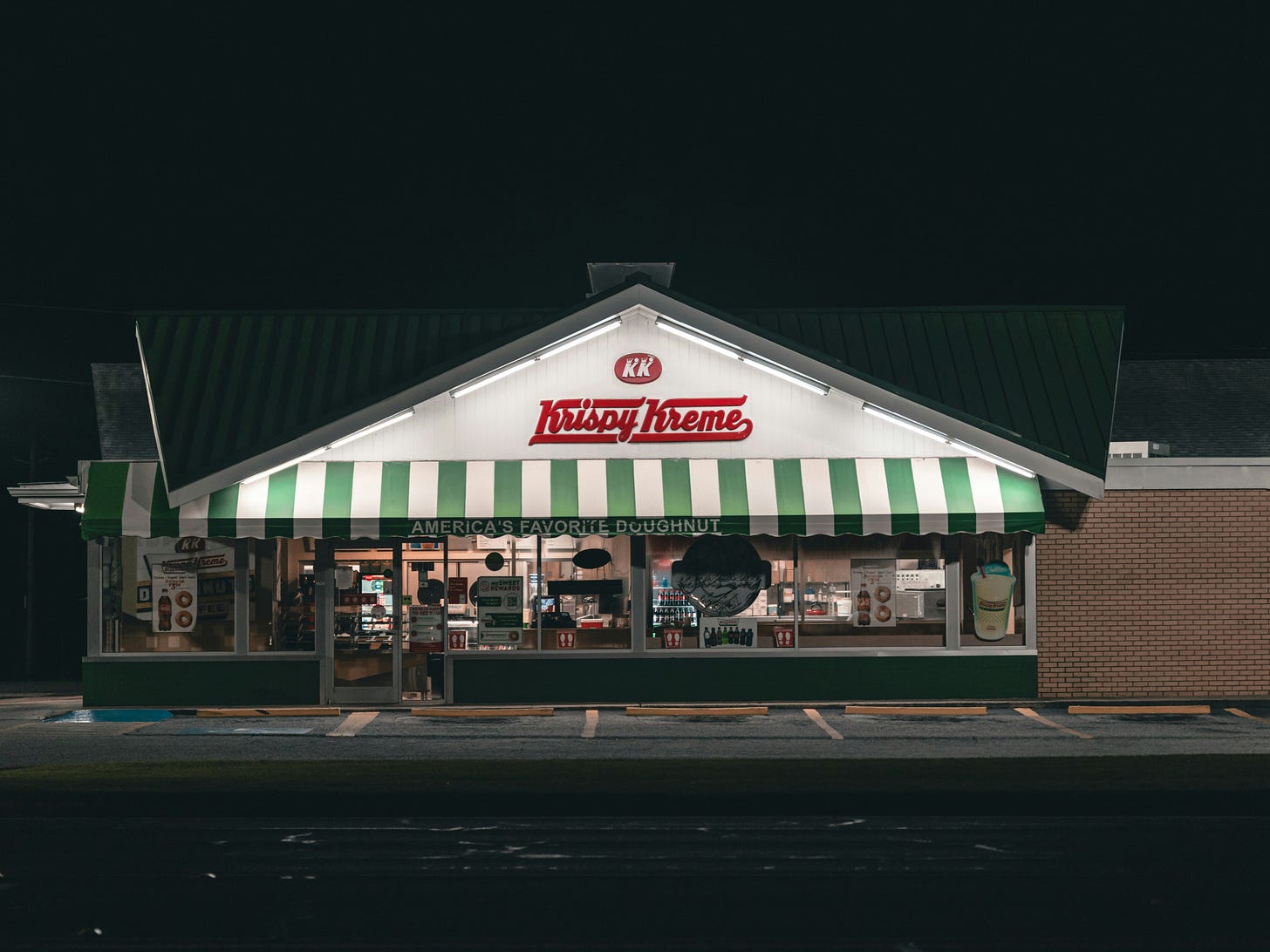
Donuts, traditionally spelled “doughnuts” when we’re pretending to respect the Queen's English, are more than a breakfast treat. They are a greasy, sugary distillation of the American story: immigrant invention, mythmaking, mass production, and consumer spectacle. And like much of American culture, the donut didn’t start here; it simply found its truest expression on this soil.
Fried Dough Across Empires
Before it was an American icon, fried dough traveled the world. The Dutch brought olykoeks (“oil cakes”) to New Amsterdam, later New York, laying one of many colonial breadcrumbs. But the form predates that—traced to ancient Mediterranean festivals1, medieval German kitchens2, early modern England3, and Spain’s churros. Some even argue that fried dough originated in ancient China, like many good ideas, and was eventually appropriated by the West.4
In other words: donuts are globally inspired, a colonial byproduct, and culturally adaptive. Basically, peak American.
The Hole Story: How Myths Are Made
The famous donut hole? That’s pure Americana, legend wrapped in deep-fried bravado. Captain Hanson Gregory allegedly invented it aboard his ship in 1847, stabbing his mother’s spiced dough balls onto the wheel for even cooking. Other versions claim a pepper tin, a digestibility hack, or the practical logic of baking with fewer ingredients on a perilous voyage.
The truth? Irrelevant. The myth matters more because that’s how America likes its history: lightly researched, heavily romanticized.
War, Women, and Fried Comfort
By World War I, donuts were repackaged as nostalgia-on-demand. Women volunteers, absurdly dubbed “Doughnut Lassies, ”fried them in field kitchens for homesick soldiers. The term “doughboys” for American infantry might not have started with donuts, but the pastry helped sweeten the myth of righteous, homespun democracy in the trenches of Europe’s failure.
Spectacle and Sugar: The Rise of the Donut Machine
After the war, the donut entered the roaring twenties like a vaudeville star. Adolph Levitt, a Russian immigrant, built the first automated donut machine in New York. Behind his bakery’s glass walls, crowds gawked at the puffy, golden rings being born from steel and oil, a kind of edible assembly line for the age of Fordism. The donut was no longer just tasty; it was modern, performative, American.
Keep reading with a 7-day free trial
Subscribe to Stew on This to keep reading this post and get 7 days of free access to the full post archives.



